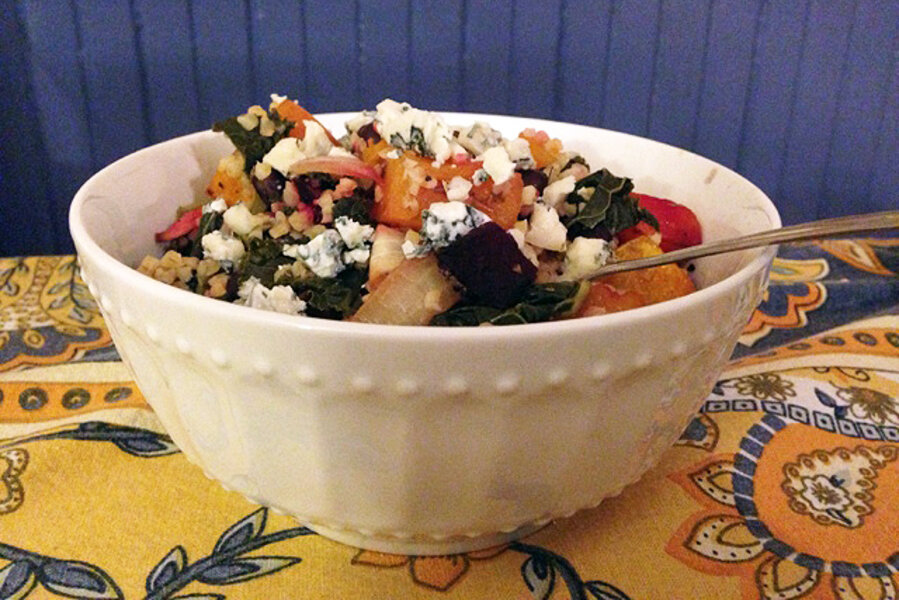By Mollie Zapata, Eat. Run. Read.
1-1/2 cups dry bulgar (i.e. one Trader Joe's 10-minute bag of bulgar)
3 cups butternut squash cubed
1 apple, cut into chunks about the same size as the squash
1 beet, cut into chunks about half the size of the squash (because beets take longer to roast)
1/2 yellow onion, diced
1 teaspoon dried oregano
1 teaspoon dried thyme
1 teaspoon garlic powder
1/2 teaspoon salt
1/2 teaspoon pepper
1 tablespoon olive oil
2 pounds kale (it started as about 12-16 cups and cooked down to about 3)
1 can black beans
Gorgonzola cheese
slivered almonds (optional, to sprinkle on top)
1. Preheat oven to 400 degrees F.
2. For the kale: Rip or cut kale into smallish pieces and stuff into a large pot with a lid. Add a splash of water. Turn the stove on to medium-low, and let it cook with the top on for about 35 minutes, stirring occasionally, and adding more water if it looks like it's burning or drying out.
3. For the roasted veggies: While the kale is cooking, on a large baking sheet, use your hands to toss butternut squash, apple, beet, onion, oregano, thyme, garlic powder, olive oil, salt, and pepper. Roast for about 30 minutes (or until done), tossing with a spatula every 10 minutes.
5. For the bulgar: Prepare according to package instructions (it cooks the same as rice, and takes 10-15 minutes)
6. Assembly: Add everything to the big pot with the kale (which will have cooked down a lot), add black beans (drained), and mix thoroughly. For serving, sprinkle with gorgonzola cheese and almond slivers.
7. Storing: Spoon into Tupperware and store in the freezer. Defrost and reheat when ready to eat.
Read the full post on Stir It Up!








